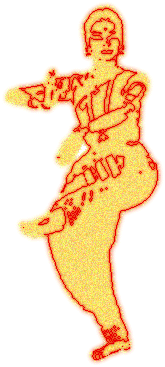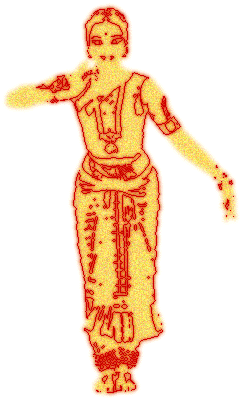


|
I found it very odd that Sati and Parvati came into their own in the tradition so late. And it looks as
if their history might have come into the tradition mainly (or at least partly) through plays. This is
not something that would be acceptable in the West. Our deities have to be well established in
antiquity and "respectable" sources. Yet, the stories Sati and Parvati appear to come into Indian
mythology quite late, and in an odd way. Even they themselves do not appear until after the Vedic
period. But this is not something that concerns the Indian way of thinking as much as it
predominates the Western mind. Sita/Parvati have risen to great standing in the Indian tradition,
through a rather ignoble start. But in India they are willing to accept new gods and goddesses all
the time, believing that they were always there instead of the Western ideal of one truth, one god,
one reality.
Sati's role is a strange one, she does more through her death than she appears to through her life. Her marriage is meant to bring Siva into the world, and when such fails through others (her father in fact) not allowing her to carry out this mission, she kills herself, and more greatly ties Siva to the world than she ever could have in life, bringing a piece of him to stay on earth forever. Her death hails the admission of Siva into the popular sacrificial cult, and her death is the catalyst that "saves creation" by bringing Siva into the world. He mourns her, but it is her death that makes the continued existence of the world possible, and he attempts to stay with her (at least sexually) even after death (which could raise some strange necrophilia issues if these were not gods...).
|
| This perhaps raises the question of what exactly was the relationship between Sati and Siva, was it more than just a physical relationship? The dice playing with Parvati later may show Siva trying to make up for his treatment of her earlier incarnation, or it may just be an extension of something he did with Sati that was never mentioned (in which case their relationship was likely much deeper than just sex). Sati's reincarnation then could be for many reasons, one even being that Siva did not treat her well in life and giving him a chance to change that. Siva and Parvati's life is also ruled by a great deal of sex, so much (and of such potent beings) that out of fear the gods interrupt them. Their marriage is not blissful, even though it has its moments of happiness, Siva being described as not being able to take care of himself, Parvati as the long suffering wife. So perhaps the marriage with Sati was not so blissful either. But Parvati calms Siva, turns him from destroyer into husband (even if he is not always good at it). Perhaps Sati did the same? Or maybe she was less of her own person, and less needing to complain about Siva being a layabout (which might also be a reason for Parvati to be her reincarnation, she could now be more of her own person, denied to her in her other life), more able to be the good wife and not complain about anything. Parvati has the wrathful side that is absent from Sati, who was the dutiful wife and showed her anger by suicide, Parvati is said to have given birth to Kali (but Durga is also said to have given birth to Kali, in other myths) in a fit of anger, lashing out instead of sacrificing herself. Parvati is more of the hotheaded independent type (comparatively at least) to Sati, who takes out her anger in entirely different ways. Both women tame Siva's violent nature, although Sati left, and therefore was only able to tame him for a while, whereas Parvati is the constant force keeping him from the destruction of the world. Both women civilized Siva in their ways, although Parvati was able to bring Siva more into the world than Sati's sacrifice. Perhaps this says something *against* the practice of Sati, that life can accomplish more than death. |

|
The sacrifice of Sati is still opposed to the sati of widows though. In sati the woman leaves the
world to join her husband. This practice appears to be the antithesis of Sati's sacrifice of herself,
she wanted to bring her husband into the world, she was sending herself away from him, killing
herself so he would be more in the world. The sati of widows is the opposite, the widow kills
herself to be with her husband, and neither of them are in the world. The goddess Sati broke ties
with her husband, whereas the practice of sati is maintaining those ties. The fact that the word used
for both is the same is something puzzling. The act may be similar, killing of oneself for the
husband, but the circumstances, motivations, and consequences of the acts are starkly divergent.
 |
 |
|---|---|
| Sati | Home |